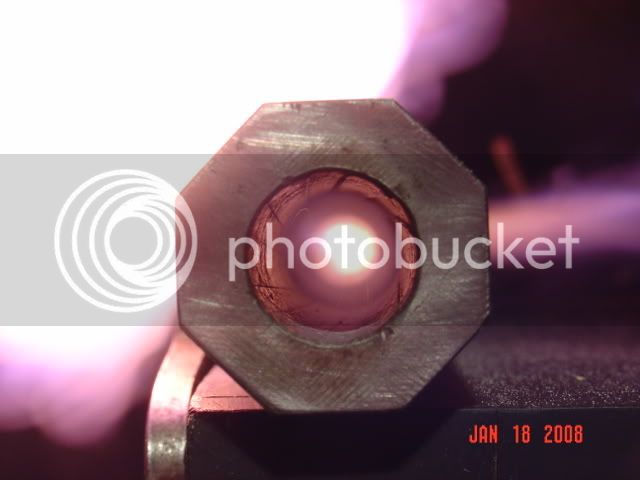The problem with LOW Vents-where its right down at the bottom of the pan is that HEAT rises! Its heat, not flame that ignites the main charge.
For those reasons, the only way to get a LOW VENT flintlock action to fire quickly is to put some priming powder right at the MOUTH of the VENT HOLE, but not in it.
With the NOCK patent breech style guns, some have an adequately sized Flash Channel from the TH to the back of the powder chamber, while others don't. If the shooter fails to flush that channel with alcohol to remove oil and congealed grease and debris before taking it to the range or field, he takes the chance that the flash channel will be obstructed, and the HEAT from the flash pan will not get to the powder chamber.
During normal Loading procedure. Air is trapped in front of the PRB, and is pushed through the powder charge, taking small " fines" of powder through the small hole in the back of the powder chamber in the breech plug, and into the flash channel. The air also forces some crud, and dried debris out of the TH in the process. You should be able to both SEE, and HEAR the air escaping out the TH when you are driving the PRB down onto the powder.
It was our practice on the club range that if the shooter, or the men standing on either side of him did NOT see or hear( its a loud hissing sound) air escaping the Touch Hole(TH), We stopped the shooter, and attempted to use a nipple pick to clear the flash hole to get the gun to discharge. Usually, the load was NOT fired at the target, but merely fired into the backstop under the Range officer's supervision. Sometimes, priming powder had to be forced into the flash channel to provide a "slow-fire" but necessary fire to ignite the main charge. Sometimes, the problem was that the shooter got too much oil or water into his gun cleaning it, didn't even know he had a smaller powder chamber, and didn't dry it out. That fouled the powder in the chamber, so that several successive attempts with flash powder stuffed into the flash channel were needed to dry the powder in the powder chamber, so that the rest of the powder would ignite. I usually kept a .22 cal. and a .30 cal. Bore brush in my range box, so that we could clean and dry the powder chambers on these guns for the shooters, to get them back in action.
One does NOT have to OWN a T/C rifle, or CVA, or any of the other " Nock" patent breech guns to be familiar with their merits and limitations. If the guns are cleaned and maintained properly, they are fine shooters. IF not, problems arise. I do not hesitate to recommend shooters look at the T/C and Lyman products if that is what they want in the style of their gun. I do caution them about keeping that powder chamber, and flash channel clean, however. :hmm: :shocked2: :hatsoff:





 Now I have developed this flat spot on my forehead. :thumbsup:
Now I have developed this flat spot on my forehead. :thumbsup:
